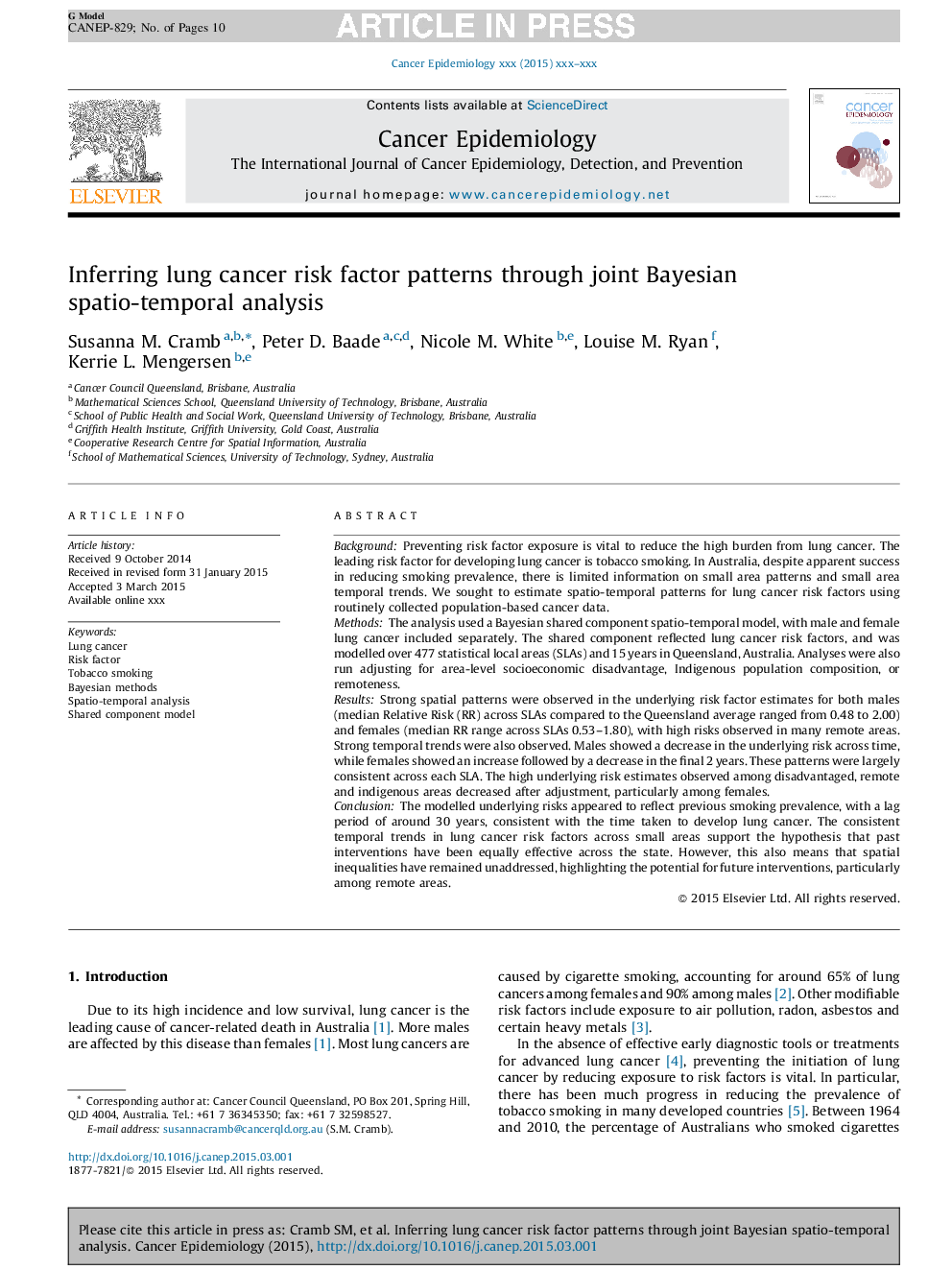| Article ID | Journal | Published Year | Pages | File Type |
|---|---|---|---|---|
| 10897321 | Cancer Epidemiology | 2015 | 10 Pages |
Abstract
The modelled underlying risks appeared to reflect previous smoking prevalence, with a lag period of around 30 years, consistent with the time taken to develop lung cancer. The consistent temporal trends in lung cancer risk factors across small areas support the hypothesis that past interventions have been equally effective across the state. However, this also means that spatial inequalities have remained unaddressed, highlighting the potential for future interventions, particularly among remote areas.
Related Topics
Life Sciences
Biochemistry, Genetics and Molecular Biology
Cancer Research
Authors
Susanna M. Cramb, Peter D. Baade, Nicole M. White, Louise M. Ryan, Kerrie L. Mengersen,
